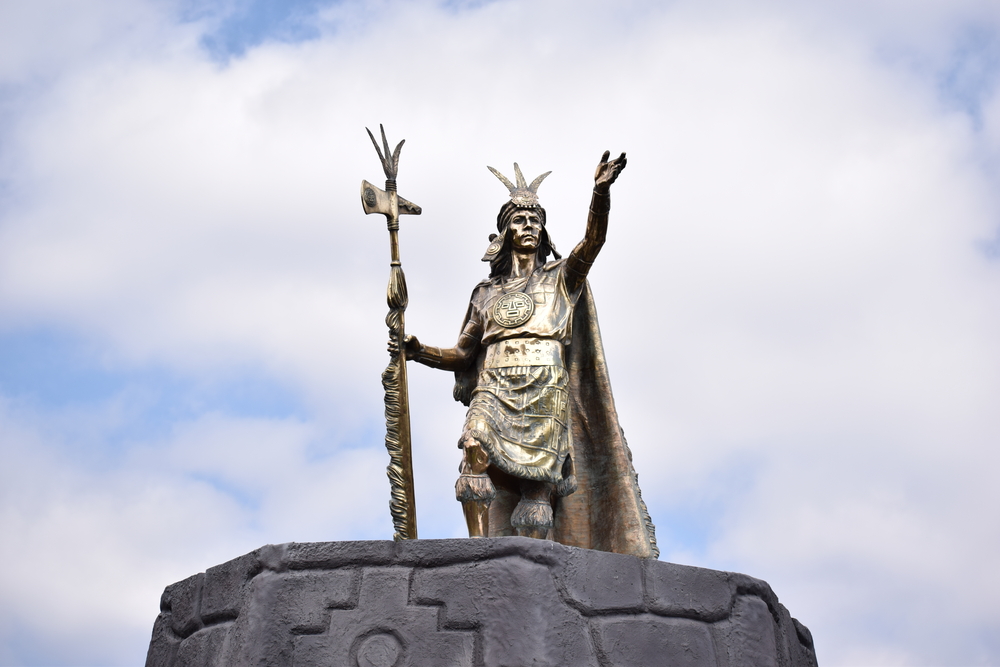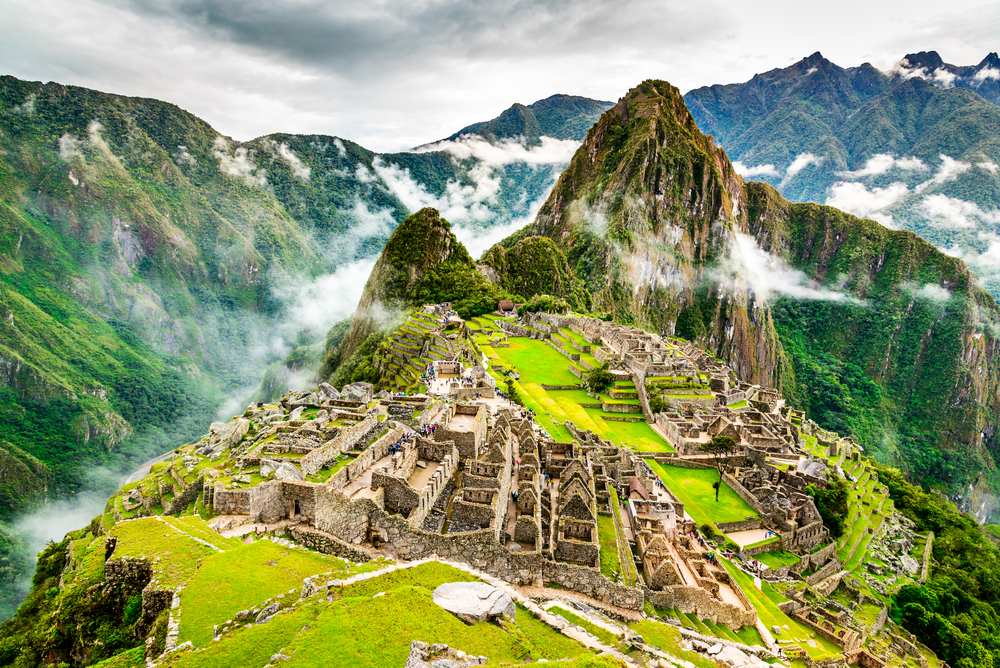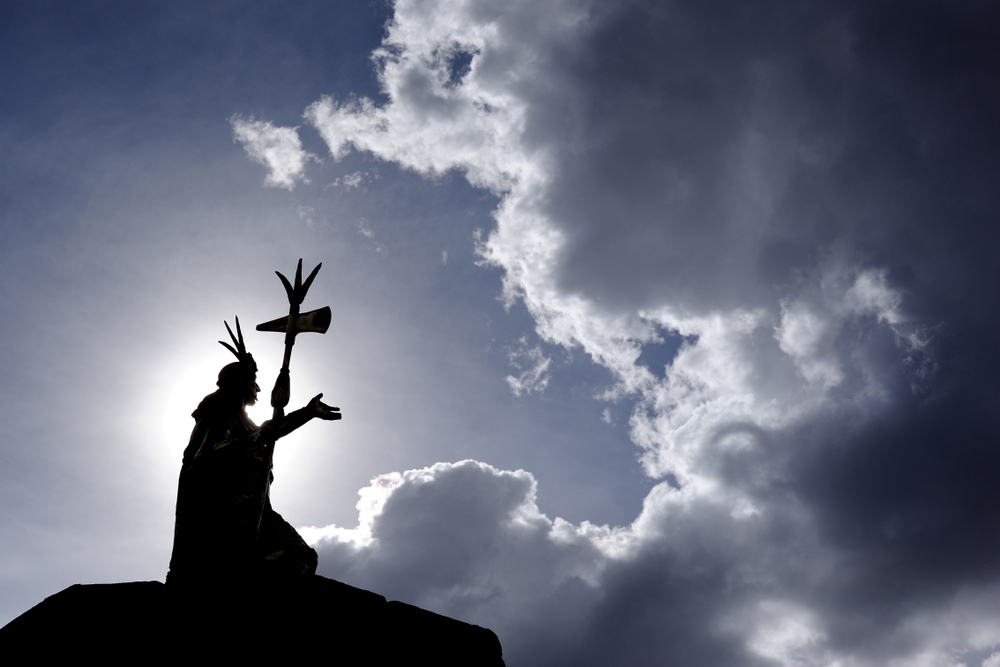The Incas bring to mind images of majestic mountains, breathtaking landscapes, and a complex and fascinating civilisation. This ancient civilisation flourished in what is now Peru, extending across western South America.
But who were the Incas, and why does their story captivate us? Let's delve into the world of the Incas, exploring their culture, achievements, and the mysteries surrounding them. Our journey will uncover their weapons, sacrifices, and religious practices, shedding light on a civilisation that has left an indelible mark on history.
Jump to:
- The Rise of the Inca Empire
- Architectural Marvels: A Testament to Inca Ingenuity
- Society and Culture: A Rich Tapestry
- The Four Corners of the Inca Empire: Unveiling Tawantinsuyu
- Religion and Cosmology: The Heart of Inca Life
- The Incas' Downfall: A Convergence of Factors
- Weapons, Warfare, and the Inca Warrior
- Culinary Traditions: What Did the Incas Eat?
- The Inca Legacy: A Lasting Impact
- Frequently Asked Questions About the Incas
The Rise of the Inca Empire

The Inca Empire, known as Tawantinsuyu, was the largest in pre-Columbian America. Its administrative, political, and military centre was located in Cusco in modern-day Peru. The Inca civilisation thrived from the early 15th century until its downfall at the hands of the Spanish conquistadors in the 16th century. But what made the Inca Empire so extraordinary?
Architectural Marvels: A Testament to Inca Ingenuity

Inca architecture is known for its precision and durability. The Incas were master stonemasons, evident in structures like Machu Picchu, which has stood the test of time. Inca buildings, walls, and roads were constructed with a technique that involved cutting stones so precisely that they fit together without mortar. Their most significant architectural feats include the Sacsayhuamán fortress and the city of Cusco, reflecting the Inca's sophisticated understanding of engineering and architecture.
Society and Culture: A Rich Tapestry
The Inca society was highly organised, with a strict hierarchy and a sophisticated system of agriculture, craftsmanship, and trade. The Inca Sapa was the empire's ruler, considered a direct descendant of the sun god Inti. Below him, the Inca nobility administered the vast empire, which was divided into four regions, each overseen by a governor.
Inca culture was rich and varied, with a strong emphasis on weaving, pottery, and metalwork. The Incas are known for their intricate textiles and stunning gold and silver jewellery, which played a significant role in their religious ceremonies and as a status symbol.
The Four Corners of the Inca Empire: Unveiling Tawantinsuyu
The Inca Empire was ingeniously divided into four principal regions, known collectively as Tawantinsuyu. This division was a testament to the Inca's administrative brilliance and a reflection of their worldview, which sought harmony and balance in all things. Let's explore the four corners of the Inca Empire, each governed from the heart of the empire, Cusco, which was considered the navel of the world by the Incas.
1. Chinchaysuyu: The Northwestern Realm
Chinchaysuyu, extending along the Pacific coast and into the Andean highlands, was the northwest quarter of the empire. This region was rich in resources, including precious metals and fertile lands, playing a crucial role in the economic strength of the Inca Empire. It was also home to significant military outposts, securing the empire's frontiers.
2. Antisuyu: The Land of the Jungle
Antisuyu, the smallest of the four regions, lay to the northeast, encompassing the lush, dense jungles of the Amazon Basin. This area was less populated and more challenging to control due to its dense vegetation and diverse topography. However, it was valuable for its abundance of exotic woods, feathers, and other unique resources that were prized within the empire.
3. Collasuyu: The Southern Expanse
The largest region, Collasuyu, covered the southern and highland portions of the empire, including what is now Bolivia and parts of Chile and Argentina. This region was essential for agriculture, particularly for crops such as potatoes and maize, which were staples of the Incan diet. The vast Lake Titicaca, a sacred site for the Incas, also lies within this region, embodying the spiritual connection the Incas had with their land.
4. Cuntisuyu: The Western Sector
Cuntisuyu comprised the western part of the empire, stretching along the coast and reaching into the mountains. This region was essential for its access to the sea, providing seafood to complement the Incan diet, and for its role in trade and communication between the coastal communities and the highlands.
The Heart of an Empire: Cusco
At the center of these four regions stood Cusco, the capital of the Inca Empire. Cusco was not just a political and administrative hub; it was also a sacred city, believed to be the centre of the world. From here, the Sapa Inca, the emperor, and his advisors orchestrated the administration of an empire that was a mosaic of cultures, languages, and terrains.
Religion and Cosmology: The Heart of Inca Life
Inca religion was polytheistic, meaning they worshiped a variety of gods related to nature and daily life. The most well-known deity was Inti, the sun god, symbolising life and fertility. The Incas believed in an afterlife, which profoundly influenced their practices, including mummification and ancestor worship.
Sacrifices, both animal and human, were a key part of Inca religious rituals aimed at appeasing the gods and ensuring prosperity. The most solemn sacrifice was the capacocha ceremony, where children were offered to the gods, reflecting the Incas' deep spiritual connection with the divine.
The Incas' Downfall: A Convergence of Factors
The Spanish conquest, led by Francisco Pizarro, marked the end of the Inca Empire. However, it wasn't just the Spanish firepower that led to their downfall. Internal strife, diseases brought by Europeans, and the empire's sheer size, which made it difficult to manage, all contributed to the Incas' demise.
Despite their fall, the Incas' legacy endures in the stunning ruins they left behind, their contributions to agriculture (such as the cultivation of potatoes), and the Quechua language, still spoken by millions in South America today.
Weapons, Warfare, and the Inca Warrior

Incan warfare was highly organised, and their warriors were skilled with various weapons, including slings, clubs, spears, and the bolas. Combined with their strategic prowess on the battlefield, these weapons allowed the Incas to expand their territory rapidly. Incan armour, made from padded cotton and small wooden or metal plates, offered protection against enemy attacks.
Culinary Traditions: What Did the Incas Eat?
The Inca diet was rich and diverse, primarily based on maize, potatoes, and quinoa. They developed advanced agricultural techniques, such as terrace farming, to cultivate crops in the challenging Andean environment. Meat came from domesticated animals like llamas and guinea pigs, and the Incas also enjoyed a variety of fruits and vegetables. Their ability to preserve food using techniques like freeze-drying, was remarkable and essential for surviving the harsh Andean winters.
The Inca Legacy: A Lasting Impact
The story of the Incas is a testament to human ingenuity, resilience, and the impact of civilisation on the world. The Incas have left an indelible mark on history, from their architectural achievements and agricultural innovations to their complex social structures and rich cultural traditions.
Frequently Asked Questions About the Incas
What Language Did the Incas Speak?
The Incas spoke Quechua, which remains one of the most spoken indigenous languages in South America today. Quechua was an instrument of empire administration, unifying the diverse peoples within the Inca Empire.
Were the Incas Tall or Short?
Historical records and skeletal remains suggest that the average height of the Incas was shorter compared to modern standards, likely influenced by their genetics and the high-altitude environment in which they lived. However, their physical endurance and ability to thrive in harsh mountainous terrains were remarkable.
Why Were the Incas So Rich?
The Incas were considered rich due to their vast reserves of gold and silver, which were abundant in their empire. These precious metals were used for crafting exquisite jewellery and artifacts and played a significant role in their religious ceremonies. Moreover, the Incas' wealth was also attributed to their advanced agricultural techniques and extensive trade networks, ensuring a steady supply of food and resources.
How Did the Incas Fall?
The fall of the Incas can be attributed to several factors, including the Spanish conquest led by Francisco Pizarro. The Spaniards had superior weapons and formed alliances with rival groups dissatisfied with Inca rule. Additionally, diseases brought by the Europeans, such as smallpox, decimated the Inca population, further weakening their empire.
Were the Incas Violent or Peaceful?
The Incas were both builders and warriors. While they achieved remarkable feats in architecture, agriculture, and craftsmanship, they also expanded their empire through military conquests. However, their approach to governance was often based on integrating conquered peoples rather than ruling through sheer force, suggesting a complex blend of violence and diplomacy.
Are There Still Incas Left?
Today, many people in Peru and across the Andes consider themselves descendants of the Incas, maintaining many of the traditions, languages, and practices of their ancestors. While the Inca Empire no longer exists, the cultural heritage and identity of the Inca people live on.
What Did the Incas Invent?
The Incas made significant advancements in various fields, including agriculture, engineering, and medicine. They invented terrace farming, which allowed them to cultivate crops on steep mountain slopes, and developed a sophisticated road system that connected the vast empire. The Incas also had a unique way of recording information using a system of knotted strings called quipus.
Did the Incas Sacrifice Humans?
Human sacrifice was a part of Inca religious practices, though it was not as common as animal sacrifice. The most notable form of human sacrifice was the capacocha ceremony, which involved the sacrifice of children during significant events or in times of distress, such as famine or the death of an emperor.
What Had the Incas Never Seen Before?
When the Spaniards arrived, they brought with them many things that the Incas had never seen before, such as horses, firearms, and steel armour. These unfamiliar sights, combined with the Spaniards' tactical advantage and diseases they brought, contributed to the swift downfall of the Inca Empire.
Were the Incas Mostly Vegan?
The Incas' diet was primarily based on agriculture, with maize, potatoes, and quinoa being staples. However, they were not vegan, as they also consumed meat from domesticated animals such as llamas, alpacas, and guinea pigs. The Incas had a balanced diet that included both plant-based foods and animal protein.
Recommended for you!
Best SellersDiscover the History of the Incas with Centre of Excellence
Voyage through time with our History of The Incas Diploma Course, crafted to reveal the marvels of ancient civilisations.
Why Centre of Excellence?
- Accessibility: We firmly believe in making education accessible to all. That's why we've set our course prices to be inclusive, ensuring everyone has the opportunity to learn.
- Flexibility: Our courses are designed with your lifestyle in mind, offering the freedom to learn at your own pace. This means you can easily weave education into your daily life.
- Broad Curriculum: Our comprehensive course offerings delve into the intricate aspects of the Incas, addressing a wide range of interests and fulfilling various educational needs.
- Dedicated Support: Upon enrolment, you'll receive personalised tutor support and become part of a vibrant community of learners. This ensures you're well-supported throughout your educational journey.
Special Invitation
We're excited to present our History of The Incas Diploma Course, now priced at £29 for a limited period, providing savings of over £100!













